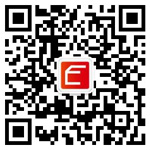
A better way to isolate exosomes
"We therefore pursued the ExoQuick® method for further study, as these samples required much less sample input, a key benefit when working with clinical samples and mouse models1."
Need exosomes? SBI"s ExoQuick-TC enables high-throughput, quantitative isolation of exosomes from low volumes (as little as 1 ml) of tissue culture media and certain biofluids (saliva, urine, follicular fluid, and breast milk). Note, to isolate exosomes from serum, plasma, or ascites fluid, use the original ExoQuick formulation (EXOQ5A-1 or EXOQ20A-1). Compatible with a wide variety of downstream applications, ExoQuick-TC is an effective and proven alternative to ultracentrifugation1-3.
ExoQuick-TC’s fast, ultracentrifugation-free method:
- Saves time and labor
- Is easily scalable
- Conserves precious sample
- Delivers high yields of functional, high quality exosomes
- Can be used to isolate exosomes for a wide range of downstream applications, including
- Biomarker studies
- Exosomal miRNA profiling
- Exosomal proteomics
- Exosomal lipidomics/metabolomics
- Functional studies, such as in cell-to-cell signaling
- Basic biology, such as role in tumorigenesis
ExoQuick-TC is a proprietary polymer that gently precipitates exosomes. First, pre-clear your samples of cells and cellular debris, and then simply add the appropriate amount of ExoQuick-TC to your cleared biofluid, refrigerate, and centrifuge (see the product manual for protocol details). Your exosomes will be in the pellet, ready for resuspension in an appropriate solution.
| Biofluid | Sample volume | ExoQuick-TC Volume |
|---|---|---|
| Tissue culture media, urine, cerebrospinal fluid (CSF), etc. | 5 mL | 1 mL |
In electron microscopy studies, exosomes isolated with ExoQuick-TC appear similar to exosomes isolated using ultracentrifugation1-2, and these exosomes are also active in numerous functional assays1-3.
Exosomes isolated with ExoQuick-TC can be used for all types of protein profiling and protein characterization studies, such as mass spectrometry, Western blotting, ELISA, and more. Higher protein yields are achieved by ExoQuick purification than by chromatography, DynaBeads, or ultracentrifugation.
Exosomes isolated with ExoQuick-TC also provide excellent samples for studying exosome-associated nucleic acids such as microRNAs, siRNAs, and even mRNA. Quantitative analytical techniques such as qPCR, microarray studies, and next-generation sequencing are all compatible with nucleic acids isolated from ExoQuick-TC-purified exosomes.
Backed by a growing number of publications, ExoQuick-TC is often the best option for researchers working with low sample volumes, such as clinical research samples or small animal models.
ExoQuick-TC exosome isolation methods are patented technologies4.
Choose the right ExoQuick for your application:
| Application | Product | Catalog # |
|---|---|---|
| Purest EV isolation | ExoQuick ULTRA and ExoQuick-TC ULTRA | EQULTRA-20A-1 EQULTRA-20TC-1 |
| General purpose EV isolation | ExoQuick and ExoQuick-TC | EXOQ20A-1 EXOTC50A-1 |
| EV isolation for pre-clinical/in vivo studies | ExoQuick-CG | EXOCG50A-1 |
| EV isolation that removes contaminating lipoprotein particles from plasma or serum | ExoQuick-LP | EXOLP5A-1 |
| EV isolation that includes a de-fibrinating plasma step prior to isolation | ExoQuick Plasma Prep with Thrombin | EXOQ5TM-1 |
REFERENCES
- Chugh PE, et al. Systemically Circulating Viral and Tumor-Derived MicroRNAs in KSHV-Associated Malignancies. PLoS Pathog. 2013. 9(7): e1003484. PMCID: PMC3715412.
- Umezu T, et al. Leukemia cell to endothelial cell communication via exosomal miRNAs. Oncogene. 2013 May 30. 32(22):2747-55. PMID: 22797057.
- Sohel MM, et al. Exosomal and Non-Exosomal Transport of Extra-Cellular microRNAs in Follicular Fluid: Implications for Bovine Oocyte Developmental Competence. PLoS One. 2013 Nov 4. 8(11):e78505. PMCID: PMC3817212.
- Antes T, et al. Methods for Microvesicle Isolation and Selective Removal. Patent No.: US 9,005,888 B2.



